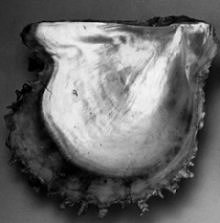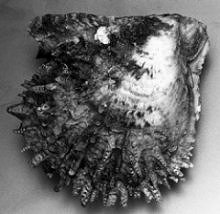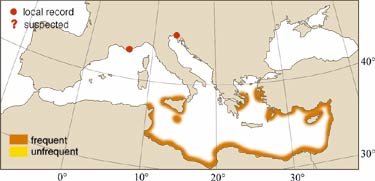

|
Relevant Synonyms
Misidentification
|
|
| photos: P. Pavlis / Coll. A. Zenetos |
|
SHORT
DESCRIPTION
color :
externally variable, generally brownish with shades of red. Internally very pearly.
common size :
usually to 50-65 mm, up to 106 mm in length. |
DISTINGUISHING CHARACTERISTICS
BIOLOGY / ECOLOGY
habitat :
a fouling species, lives attached by byssus to hard substrata (under stones, in crevices of rocks, algae) from very shallow the midwater depths. |
|
1st
Mediterranean record
|

|
|
DISTRIBUTION
|
ESTABLISHMENT SUCCESS
speculated reasons for success :
|
|
|
MODE OF
INTRODUCTION |
IMPORTANCE TO
HUMANS |
|
KEY
REFERENCES
|
|
|
 Meleagrina radiata "Deshayes" [Tillier and Bavay, 1905]
Meleagrina radiata "Deshayes" [Tillier and Bavay, 1905]